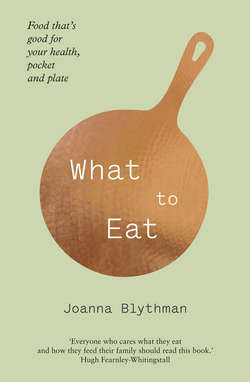Читать книгу What to Eat: Food that’s good for your health, pocket and plate - Joanna Blythman, Joanna Blythman - Страница 7
ОглавлениеAubergine
There is something miraculous about the way that raw aubergine can be transformed from a bland, spongy vegetable, with a taste and texture about as interesting as blotting paper, into luscious, yielding flesh, impregnated with sultry flavours. To get the best from this languorous vegetable, observe two principles. First, aubergine eats lots of oil. Yes, it does go against the grain to keep on adding it, but if you are not prepared to give aubergine the oil it needs, then eat something else instead. Or at least don’t stint on the oil but then drain off any surplus after cooking. Second, water — and other liquid ingredients such as tomato pulp and wine — is a potential enemy of aubergine. If you add liquid before the aubergine has absorbed enough oil and softened thoroughly, then the skin will stay squeaky-tight and tough and the skin and flesh will remain firm in the mouth and won’t absorb as well the flavours of other ingredients.
Aubergine has a slightly bitter taste, which is part of its charm. This characteristic is most evident in recipes where you keep the skin on and slightly char it. It is often recommended that you slice or chop aubergine before cooking and leave it sprinkled with salt for half an hour or so to reduce this bitterness. Most of the aubergines we buy are not particularly bitter to start with, so this isn’t really necessary. However, salting does have the advantage of drawing out water from the aubergine, which is helpful because, as a result of the way they are grown, most aubergines we cook with in Britain and Ireland are more watery than those grown outdoors in hot countries. Salting also enhances the flavour (even if you rinse the salt off thoroughly) and firms up the flesh, which means that it absorbs less oil.
The aubergines on sale in Britain and Ireland tend to be much of a muchness. The dark purple, pear-drop-shaped aubergine of uniform size and dimensions rules the roost. Middle Eastern and Asian shops often sell more varied types, with different shapes, sizes and skin tones from white through violet to purple-black. These can have subtly different flavours, being more and less bitter, and a smoother texture when cooked. Whatever sort of aubergine you go for, choose fresh ones. These should look smooth-skinned and firm and feel heavy for their size.
Things to do with aubergine
• Using a ridged, cast-iron grill pan or under a grill, char whole aubergines until the skin is stiff and papery and the interior is completely soft. Skin, then finely chop or liquidize the flesh with light tahini (sesame) paste, garlic and a little olive oil to make a dish in the style of the Lebanese moutabal, or pan-Middle Eastern baba ganoush.
• In Sicilian caponata, aubergines provide an almost meaty bulk in a sour-sweet partnership with celery, tomatoes, capers and vinegar.
• Aubergines love lamb, and flatter it immensely, in a Greek moussaka perhaps, or by adding melting texture that thickens a curry.
• Aubergines hit it off well with Thai flavours, basking happily in a hot, fragrant coconut broth.
• For lighter, more unusual lamb meatballs, use half-and-half cooked, chopped aubergine and meat.
• Tomatoes and garlic are best friends with aubergines. Cook them together in olive oil over a very low heat for hours in a shallow frying pan without a lid until they collapse into a delicious sludge. A stick of cinnamon will nudge the dish in a Middle Eastern direction. Season with salt and pepper and serve warm as a vegetable accompaniment or at room temperature as a starter, with bread or crudités, or sprinkled with parsley and salty white cheese.
Are aubergines good for me?
Even though they don’t have the showy colours that we take as markers flagging up the healthiest vegetables, aubergines have much to commend them. They provide a lot of soluble fibre, which slows down the rate at which sugar is released into the bloodstream, are a good source of B vitamins, which aid brain and nervous system function, and folate, which helps prevent birth defects. Aubergines are particularly rich in useful minerals, especially potassium, manganese, copper and magnesium. Research into the aubergine suggests that it contains very beneficial phytochemicals, such as phenols and terpenes and sterols, which may help protect the body against cancer, microbial infections and viruses, and promote heart health.
How are aubergines grown?
Most of the aubergines we buy are grown either in the UK or Holland in glasshouses in the same way as peppers (see PEPPERs/How are peppers grown?).
Are aubergines a green choice?
Glasshouse production of aubergines raises the same issues as for tomatoes (see TOMATOES/Are tomatoes a green choice?).
Where and when should I buy aubergines?
Standard glasshouse aubergines are available all year round. Most come from Holland, some from Spain, and UK-grown ones are on sale from March until November. For more varied types of aubergine, check out Asian stores and supermarkets and Middle Eastern grocers. Italian food shops sometimes import outdoor-grown aubergines from Italy.
Will aubergines break the bank?
Aubergines aren’t an expensive purchase and can provide cheap bulk in many dishes. Their meaty fleshiness makes them a good, inexpensive vegetarian substitute for meat in lots of recipes. The hidden cost with any aubergine dish is the oil required to cook it.
Aubergines keep well when refrigerated. Older aubergines may begin to sag in their skins and have golden-brown patches that indicate that they are rotting. When you cut into them, their internal pips will look darker and more obvious. If you end up with aubergines like this, there is no need to chuck them out. Just cut off the bad bits and then use as normal.
